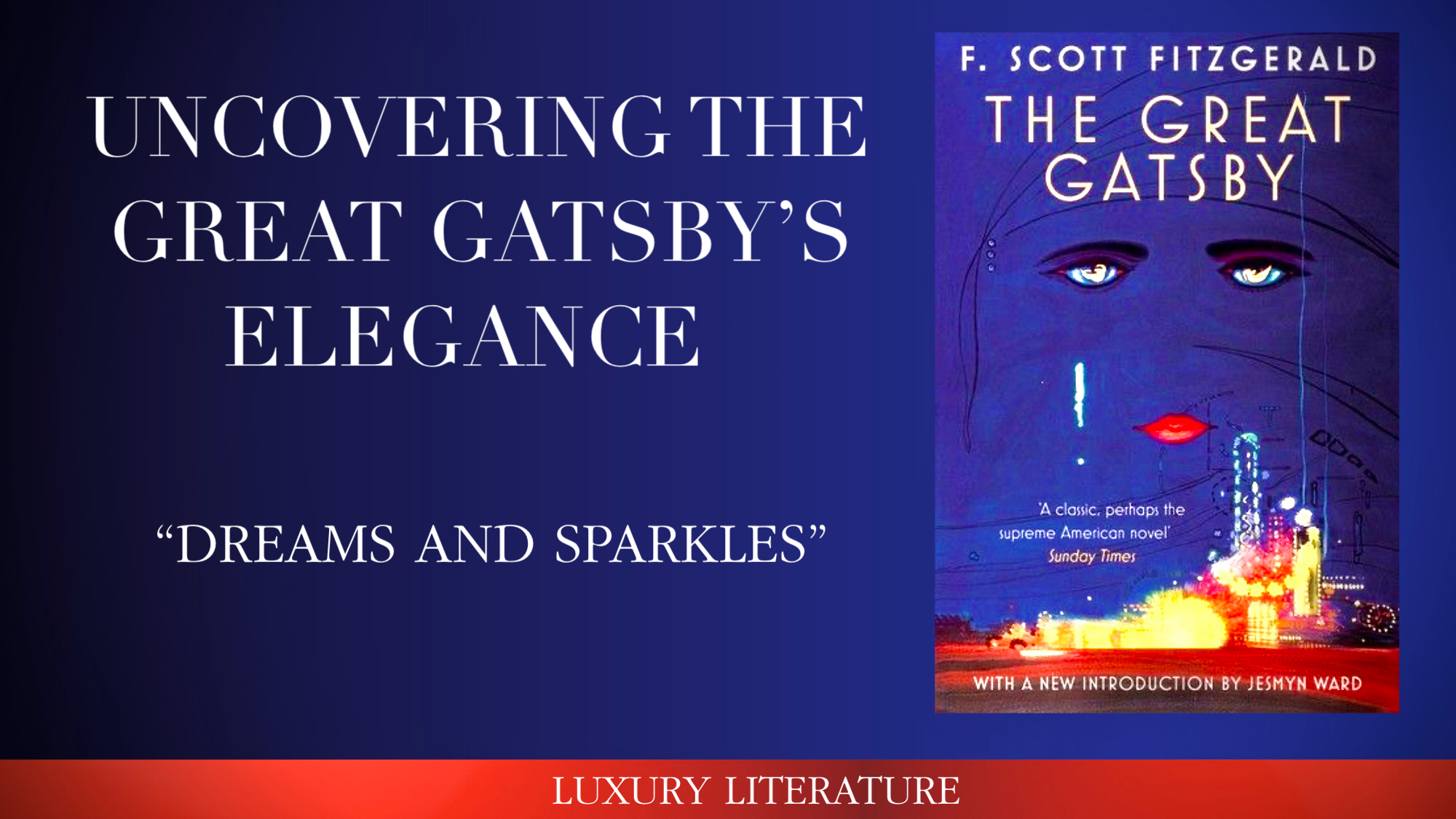Before we begin, a little synopsis:
"F. Scott Fitzgerald's great work, The Great Gatsby, takes us to the splendor and luxury of the 1920s. It follows the mysterious wealthy Jay Gatsby, who throws expensive parties in pursuit of Daisy Buchanan, the woman he has loved for years. Beneath the sparkling surface is a narrative of obsession, lost dreams, and the empty chase of the American Dream."
Hello, my dear dreamers,
Step into the spotlight dear, as we explore the flashy, jazz-infused world of F. Scott Fitzgerald’s “The Great Gatsby”. Let’s take a moment to appreciate the overwhelming grandeur, dramatic flair, and sparkling high-society glamor that make this era really unique while uncovering the Great Gatsby’s Elegance. Tonight, ladies and gentlemen, we enter a realm in which champagne flows as freely as secrets whispered beneath sparkling masks. A world of midnight dances and timeless grace.
The Great Gatsby is a time capsule from the Roaring Twenties, a glorious era of extravagance and indulgence, and I guarantee that by the conclusion of this article, you’ll be ordering a flapper dress for your next night out (and I bet you’ll look dazzling in it) So, grab your pearls and a glass of champagne, because we’re going to reveal the ageless elegance, secrets, and style that has left us all drooling nearly a century later. Shall we begin?
1. The Extravagance of Gatsby’s Parties
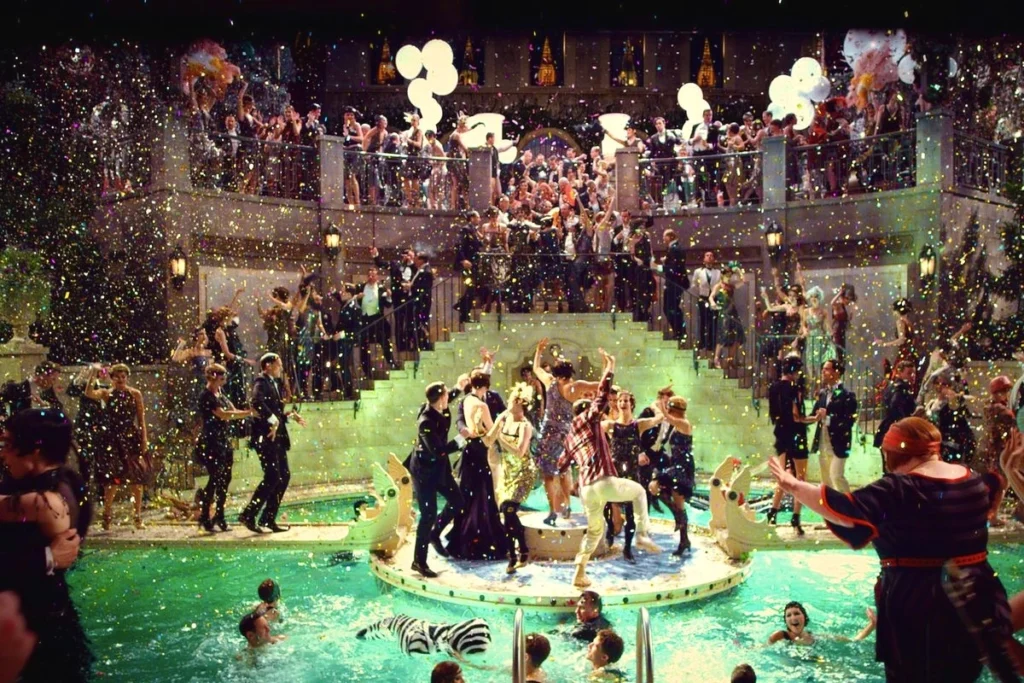
Let’s all be honest here, who hasn’t fantasized about attending one of Gatsby’s legendary parties? (If you haven’t, what are you doing with your life?) These were not ordinary meetings; they were the buzz of the town and the pinnacle of social events. Imagine vibrant jazz strains filling the air (think Louis Armstrong on repeat), huge chandeliers gleaming overhead, and champagne flowing like a sparkling waterfall (and I mean cascading, as in “can’t-see-the-bottom-of-the-glass” levels).
But these gatherings weren’t just about having fun, they were a full-fledged production. Gatsby didn’t just throw these enormous bashes for pleasure, each one was a meticulously planned show where wealth and social aspiration dazzle under the silvery sky of the 1920s. (And believe me, it was so bright that you wondered if you had unintentionally stumbled upon a movie set.) It’s more than simply a party; it’s an immersive event that combines feeling, style, and extravagance into one stunning package. The Jazz Age was full of excess, and Gatsby was at its center, orchestrating this world of wealth and grandeur like a pro (and probably wearing a bow tie while doing it).
2. The Dazzling Style of the 1920s
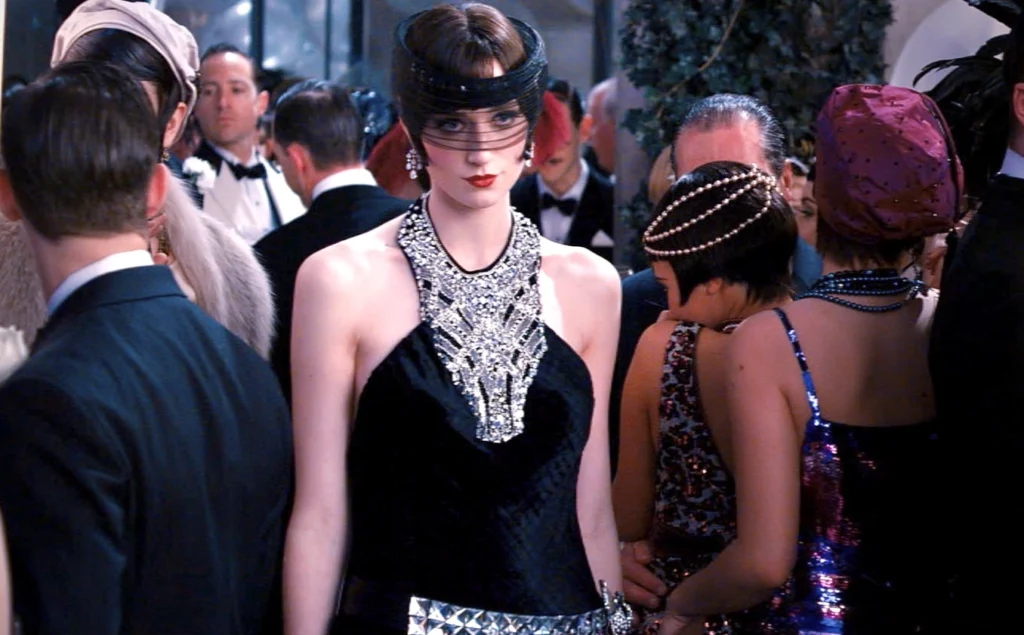
Ladies, let’s delve into The Great Gatsby’s fashion enchantment, Consider this: flapper dresses with whimsical fringes that sway with every step, shimmering beads that reflect light like tiny stars, and bold red lipstick that nearly screams, “I’m here to dazzle!”
Let’s not forget the accessories! Feathered headbands that make you feel like a roaring twenties star, pearls draped over you as if there’s never enough of them (because who can ever have enough pearls?), and art deco brooches that represent beautiful refinement. It’s all about the tiny details, right? The 1920s fashion is a visual feast, with each piece reflecting pure wealth and beauty. It’s not surprising we’re all still infatuated with this era—it’s the ultimate way to say, “I’m here to sparkle and shine, darling, and make every moment unforgettable.”
3. The Allure of Gatsby’s Mansion.
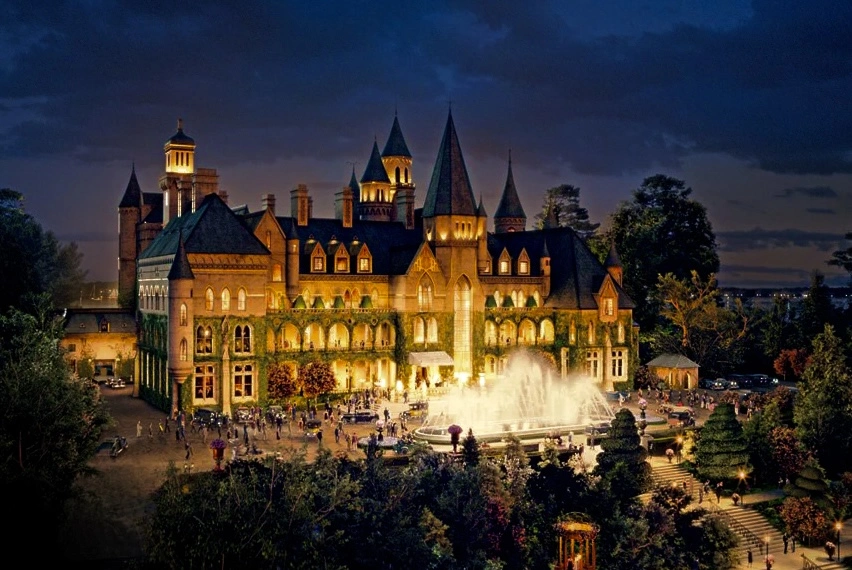
Oh, darlings, let’s speak about Gatsby’s mansion—because, honestly, where should we even begin? This is more than just a mansion, it seems like a set for a high-society drama. Consider a mansion so big that it surpasses Versailles, with sprawling lawns that seem to proclaim, “Welcome to my realm.” And the interiors? They’re so outrageously luxurious that even Marie Antoinette might raise an eyebrow.
From the ballroom, which might double as a scene for a movie about old money luxury, to the décor, which nearly shines with entitlement, Gatsby’s estate screams, “Look at me, I’ve made it!” (But, let’s be honest, Gatsby wasn’t born into wealth. There’s no silver spoon here, just a lot of glittering dreams.)
It’s like Gatsby’s ultimate DIY project—he created this extravagant fantasy as a ticket to high society, hoping to win Daisy’s heart. We’ve all met someone who attempted to buy their way into the upper class, right? Making a glossy illusion to conceal those bothersome insecurities underneath. Gatsby’s mansion may appear to be a gorgeous, dazzling dream from the outside, but it is not without flaws and secrets. Isn’t that often the case with the most spectacular exteriors?
4. The Enigmatic Charm of Jay Gatsby
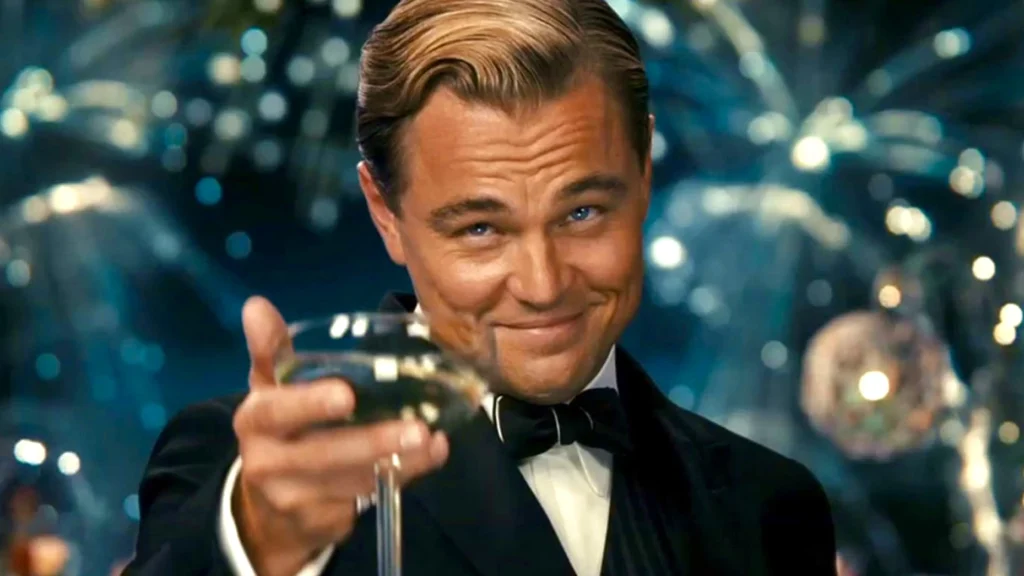
Okay, let’s go into Jay Gatsby’s mystique—because, honestly, is there anyone more intriguing? Picture this: Gatsby walks into a room, and the air becomes filled with a hum of curiosity. He’s the effortlessly charming man who makes you question if he belongs to a hidden society. Charm? He has it in spades. Mystery? Oh, certainly.
Everything Gatsby says seems like it was scripted by a dramatist who knows exactly how to keep us hanging on every word (seriously, it’s like he rehearses in front of a mirror). It’s not just about being mysterious, it’s about being so enigmatic that you can’t help but want to come closer like he’s the last piece of cake at a lavish soirée. This man symbolizes the American Dream in its most sparkling form, a classic rags-to-riches story with a twist. For him, it is more than just money; it is about attempting to mend a past that has been broken in the most spectacular, heartbreaking way possible (violin music playing in the background).
Gatsby is like a rare gem—polished, glittering, and so very precious, but also with a price tag that’s sky-high. He’s a performance of elegance and enigma, and we’re all just lucky to be in the audience. The cost of his dream might be high, but isn’t that what makes his story all the more fascinating?
5. Daisy Buchanan’s Endearing Elegance
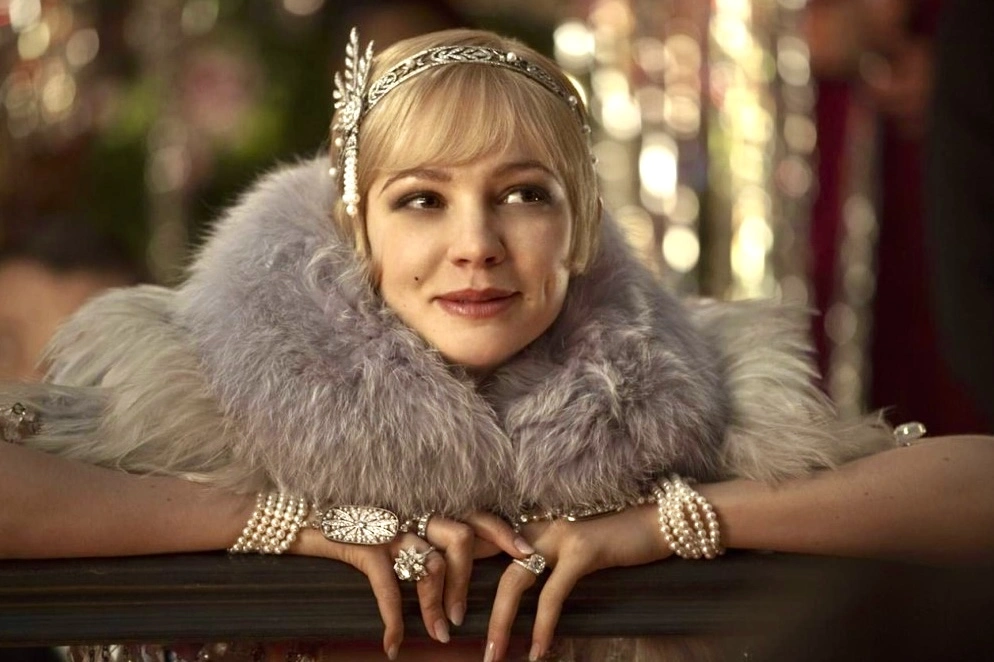
What would The Great Gatsby be without the charming Daisy Buchanan? She is a symbol of grace and minimalist beauty, with a delicate, ethereal aura. But don’t be fooled by Daisy’s beautiful face—there’s much more to her.
Gatsby has been after Daisy, the perfect woman, for a very long time. She is his ultimate fantasy. She is more than just a vision of beauty amid his glitzy world of champagne and jazz; she represents Gatsby’s unrealized ambitions.
Let’s face it: not everything that appears shiny is actually gold. Daisy’s allure is undeniable, but it also serves as an important reminder that the most exquisite visions frequently revolve around the journey rather than the end goal. Daisy’s beauty also demonstrates how even the most skillful deceptions can fall short of perfection. (Kind of like realizing the glittering party you’ve been dreaming of is really just a lot of noise and empty champagne glasses.)
Conclusion:
More than just a book, The Great Gatsby depicts an era in which ambition, glitter, and glamour collided with reality in the most glorious way imaginable. The world of beauty, riches, and the never-ending need for more in the novel captivates us, from Gatsby’s jaw-dropping parties to Daisy’s unreachable elegance. And, as we sip our champagne and appreciate the couture, Fitzgerald reminds us that there is always a story—one as deep and layered as the characters themselves. So, the next time you’re turning through the pages of this timeless work, remember that beneath the glitz, there’s a lesson about ambition, love, and the cost of pursuing a dream that may be out of reach.
Until our next glittering soirée,
With Velvet Grace and Golden Dreams.
V.V

